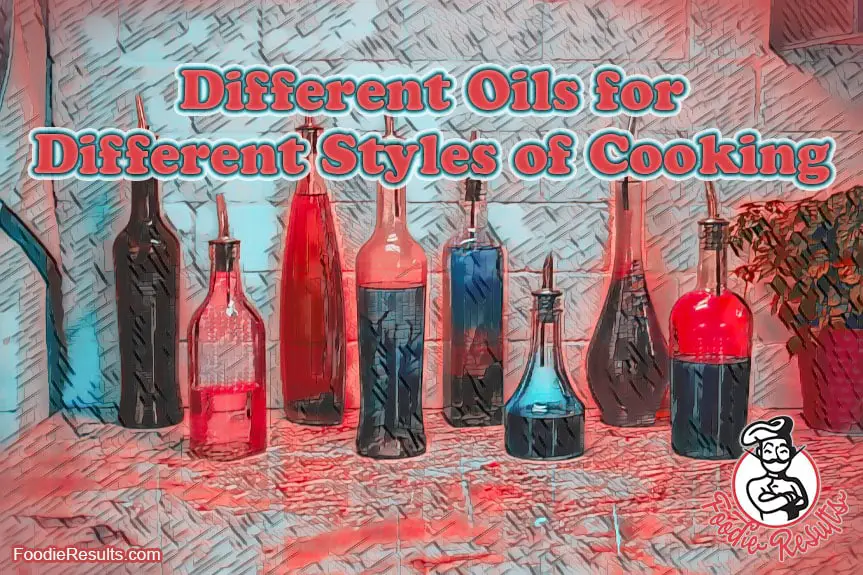For optimum results in cooking, it is essential to use the proper temperature for the oil you are utilizing. You never want to reach the smoke point during the cooking process, as that will taint the taste of your culinary creations.
The smoke point is the temperature at which cooking oils break down due to heat or exposure to oxygen, producing toxic and dangerous compounds to consume. There are many types of cooking oils with different oils smoking points. Check out this article by Spencer Heckathorn so you can also have that information.
so you can also have that information.
Most professional chefs recommend cooking in oil at 25° lower than the smoke point. When deciding to cook something, knowing the optimum temperatures for the different oils you have in your kitchen or might have available to you is beneficial. I have listed as many cooking oils as possible and shown the suggested optimum temperature for use. If you have others in your pantry, please add them and their info in the comments. This will help all of us and be very appreciated.
Optimum Temperature List
(25 Degrees below Smoke Point) and Recommended Uses for Each Different Cooking Oils
| Almond Oil | 405°F 207°C | grilling, roasting, baking |
| Avocado Oil | 495°F 257°C | refined is the best for searing, frying, baking, grilling, roasting |
| Butter | 325°F 163°C | sauteeing, baking, grilling, searing |
| Canola Oil | 375°F 190°C | sauteing, pan-frying |
| Coconut Oil | 325°F 163°C | sauteing, searing, grilling, baking |
| Flax Oil | 200°F 93°C | the flavor on the finish |
| Ghee | 457°F 236°C | sauteing, searing |
| Grapeseed Oil | 375°F 190°C | frying, baking |
| Lard | 345°F 174°C | sauteing, baking, grilling, searing |
| Macadamia Nut Oil | 185°F 85°C | roasting, baking, deep-frying; salad dressings, butter substitute |
| Olive Oil, Extra Virgin | 385°F 196°C | pure is the highest sauteing, frying med heat |
| Olive Oil, Light | 443°F 228°C | more refined than EV sauteing, baking, grilling, searing, frying |
| Peanut Oil | 425°F 218°C | deep-frying, pan-frying, sauteing, grilling |
| Safflower Oil | 425°F 218°C | deep-frying, pan-frying, sauteing, roasting, grilling, baking |
| Sesame Oil | 375°F 191°C | sauteing, pan-frying |
| Soybean Oil | 425°F 218°C | deep-frying, pan-frying, sauteing, roasting, grilling, baking |
| Sunflower Oil | 415°F 213°C | deep-frying, pan-frying, sauteing, roasting, grilling, baking |
| Vegetable Oil | 400°F 204°C | deep-frying, pan-frying, sauteing, roasting, grilling, baking |
| Vegetable Shortening | 375°F 191°C | sauteing, pan-frying |
| Walnut Oil | 295°F 146°C | the flavor on the finish |
Description of Cooking Oils
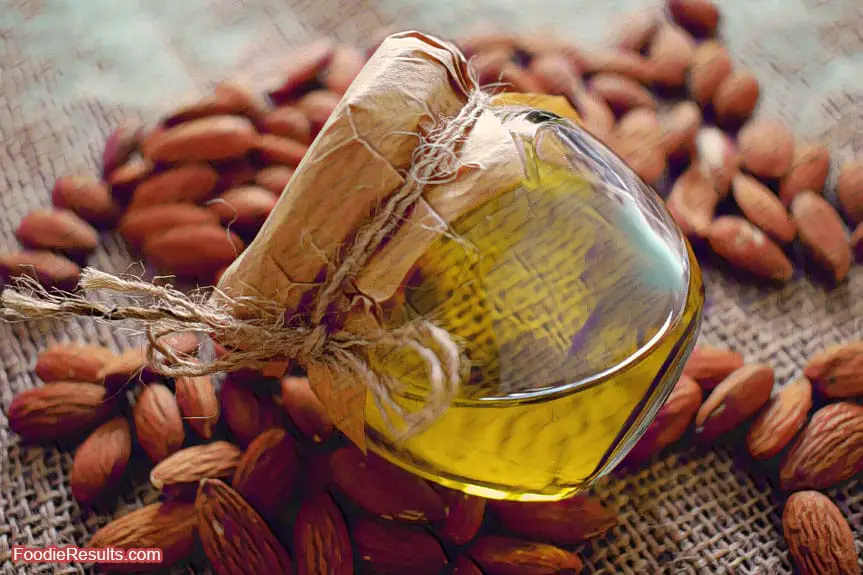
Almond oil has a smoke point of 430 degrees Fahrenheit. This smoke point is relatively high, and you can use almond oil for frying, searing, grilling, or roasting. It is also more affordable than some other cooking oils on the market. Almond oil has been used in cooking for centuries and is one of the most popular cooking oils among chefs. You can use the oil in salad dressings too! The optimum cooking temperature is 405 degrees F.
Avocado Oil is a new addition to my use of oils and fats. Avocado oil is good for your health and has a relatively high smoke point. I note that avocado oil can be refined, and this is the highest smoke point that I found – 520 degrees Fahrenheit – however, unrefined avocado oil smoked at 425 degrees. So depending on whether or not impurities are extracted, it can make a difference in which kind of avocado oil you obtain. The optimum cooking temperature is 495 degrees F.
Butter has a smoke point of 350 degrees Fahrenheit. Butter also has other healthy fats besides the fat in the butterfat that is beneficial to health and its monounsaturated fats. Butter is very absorbent and will not change the taste of your food as it is cooking, but it will make any dish extra yummy. The optimum cooking temperature is 325 degrees F.
Canola oil has a smoke point of 400 degrees Fahrenheit. This relatively high smoke point oil can be used for sauteing, pan-frying, deep-frying, baking, grilling, and anything! It is a refined oil with little flavor, so it’s perfect for making salad dressings, mayo, sauces, etc. The optimum cooking temperature is 375 degrees F.
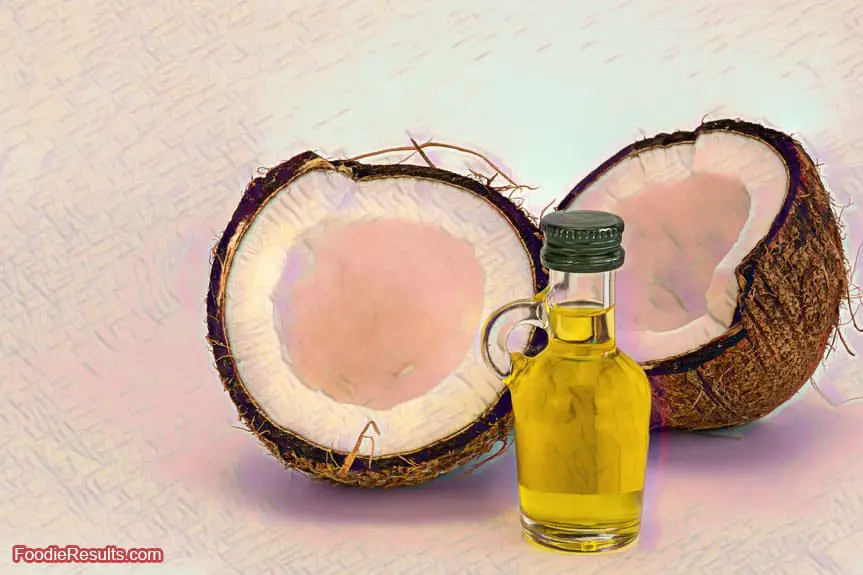
Coconut oil has a smoke point of 350 degrees Fahrenheit. This smoke point is relatively low, which can be helpful when you need to sautee vegetables or make cold dishes like dips and dressings. Coconut oil can be used in all kinds of cooking that don’t require high heat for long periods because it’s not very stable at high temperatures. It contains medium-chain triglycerides (MCT), one of the world’s most well-known fats. These are good fats metabolized differently than others, so they’re great for weight loss. The optimum cooking temperature is 325 degrees F.
Flax Oil is different from other cooking oils because it isn’t actually an oil. It’s made from ground flaxseed. Flaxseed oil is high in omega-3 fatty acids, which are essential for our health and lower the risk of cardiovascular disease, arthritis, cancer, and wrinkles! People recommend eating it with your breakfast or lunch because it will keep you feeling full longer. The optimum cooking temperature is 200 degrees F.
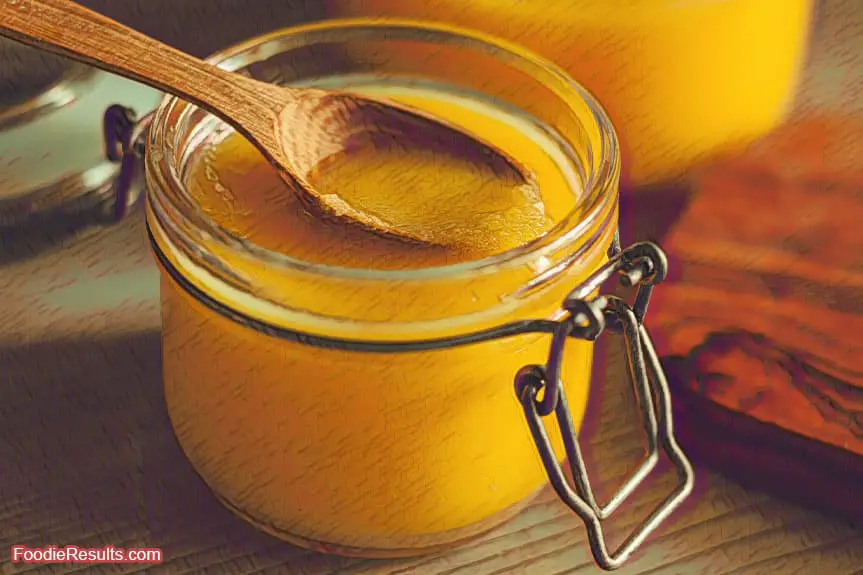
Ghee is clarified, unrefined butter with a smoke point of 482 degrees Fahrenheit. Ghee is said to be one of the healthiest foods you can eat and has been used for thousands of years in India and China for medicinal benefits. It has been used whenever there was extra butter or milk on hand since ancient times to help heal, increase the immune system, and ward off infections.
It has the same cooked butter taste as butter. Ghee is often made more than once before it’s consumed because you can continue to use the same ghee repeatedly. The optimum cooking temperature is 457 degrees F.
Grapeseed Oil is another new oil in my pantry. It is a relatively refined oil, but there are various levels of refinement, so you might want to experiment with its use. Grapeseed oil is one of the most well-known fats in the world. These are good fats metabolized differently than others, so they’re great for weight loss. Grapeseed oil has many uses besides Asian cooking if you want to experiment. I have read that it can help boost memory and help with focus at work if taken before study sessions. The optimum cooking temperature is 375 degrees F.
Lard is fat used mainly in producing soap, candles, margarine, oil paints, and other products. It is made by traditionally rendering hog carcasses using heat and pressure. Lard has historically been known for its emollient properties, making it suitable for treating many skin issues such as eczema or psoriasis. It has a high smoke point of up to 400 degrees Fahrenheit, making it helpful in sauteeing. The optimum cooking temperature is 345 degrees F.
Macadamia Nut Oil is high in monounsaturated fats, which are the good fats that help lower cholesterol levels, prevent obesity, and reduce the risk of heart disease. These are good fats metabolized differently than others, so they’re great for weight loss. They also have many uses besides cooking if you want to do some experimenting. I have read that it is also on the list of cooking oils that help boost memory and help with focus at work if taken before study sessions. The optimum cooking temperature is 185 degrees F.

Olive Oil, Regular: You will find people who say that olive oil has been proven to be better for your health than canola oil. In addition, olive oil is an excellent natural moisturizer and produces healthier skin, hair, and nails due to its essential fatty acids. Olive oil also contains vitamins A and E, which are crucial antioxidants in fighting free radicals in your body.
Olive oil contains the anti-aging compound squalene. It has been shown to decrease cholesterol and prevent heart disease. Olive oil is also believed to protect against some types of cancer and Alzheimer’s disease. Olive oil is an excellent moisturizer and is absorbed into your skin better than others, so if you have dry skin or even aged skin, olive oil may help keep the hydration levels high – which may be why it’s so healing to our bodies as well as our hair and nails.
Olive Oil, Virgin is an oil extracted from the first pressing of olives. It has a higher smoke point than extra-virgin olive oil while preserving some delicious flavor. Virgin olive oils are extracted through cold-pressing, making them very stable and flavorful for cooking.

Olive Oil, Extra-virgin, is the most prized of the olive oils. It is a type of olive oil that has been minimally processed from fresh, organic, and cold-pressed olives resulting in superior taste. It is selected based on flavor, color, and taste rather than yield or quantity. It can be used for cooking at high temperatures. The optimum cooking temperature is 385 degrees F.
Extra virgin oil has a high smoke point and is also healthy for you because it’s rich in omega 3-fatty acids like oleic acid and polyphenols, which are potent antioxidants. It is full of antioxidants, vitamin E, and oleocanthal. Olive oil has been used in cooking for centuries and is one of the most popular cooking oils among chefs today. It can be used in salad dressings too!
Olive Oil, Unrefined is an extra-virgin olive oil that does not undergo refinement or processing before being bottled. Unrefined cooking oils retain their natural antioxidants and nutrients while low in calories and cholesterol.
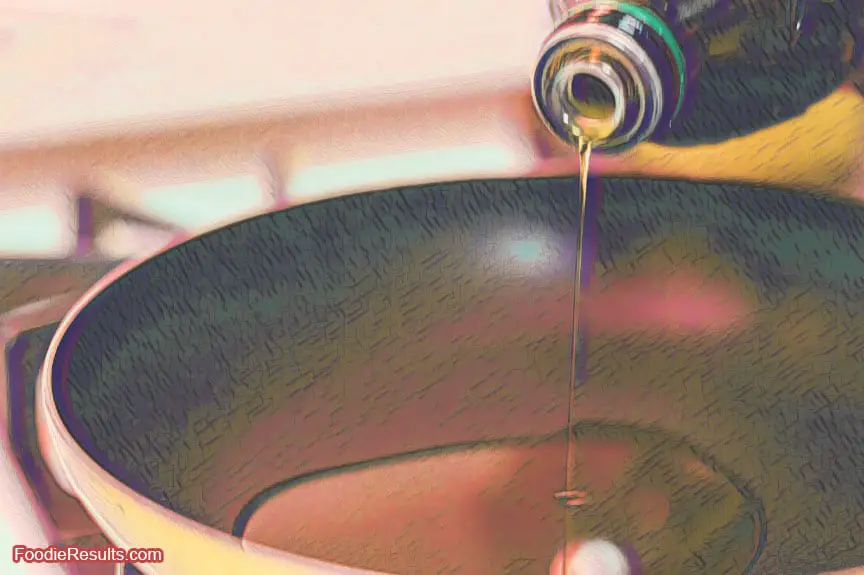
Olive oil, Light has a much lower smoke point than Extra Virgin, making it the best choice for cooking since the higher heat quickly kills this type of oil. Light Olive Oil is produced by blending extra virgin olive oil with sunflower or safflower oils to decrease the number of calories in these cooking oils by up to 50%! It also has a lot of flavors, so it doesn’t need many other ingredients to ensure your dish is tasty. The optimum cooking temperature is 443 degrees F.
Peanut oil is a type of vegetable oil that ranges in color from light to dark. It was first used by the Greeks and Romans and has gained popularity recently due to its high smoke point (450°F) and low cost. This relatively high smoke point oil can be used for sauteing, pan-frying, grilling, and anything! It has a great flavor that goes well with Asian dishes.
It also has a very mild flavor, perfect for cooking eggs. Peanut oil has been around for thousands of years. Due to many people having allergic reactions to peanuts, one must be careful and make guests aware that it is being used. The optimum cooking temperature is 425 degrees F.
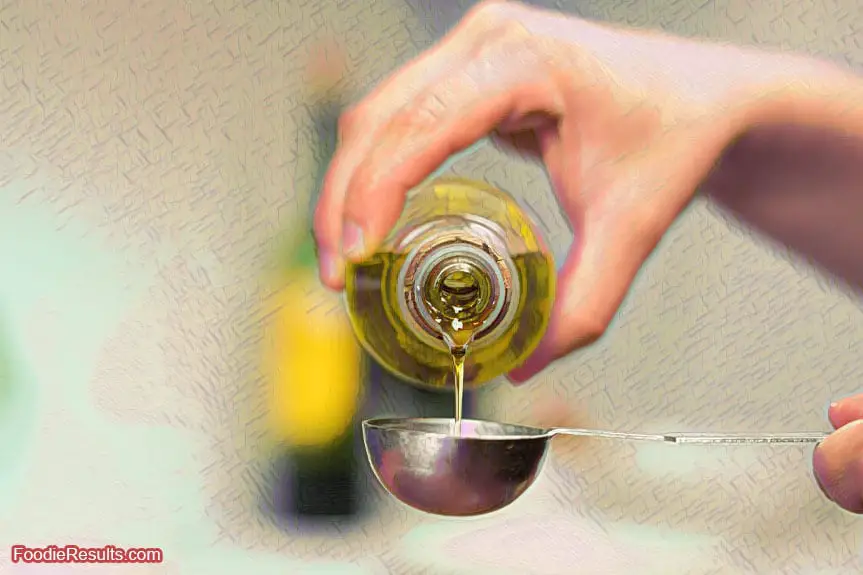
Safflower oil is often used in many cuisines because it has a neutral flavor that doesn’t clash with the food. It also has a high smoke point of 450 degrees Fahrenheit. It can be used in sauteing, pan-frying, deep-frying, grilling, and baking. The optimum cooking temperature is 425 degrees F.
Sesame oil has a smoke point of 400 degrees Fahrenheit. This relatively high smoke point oil can be used for sauteing, pan-frying, and baking. It also has a nutty and flavorful flavor and is very versatile for cooking. Sesame oil is often used in Asian cuisines, including soups, sauces, marinades, meats, vegetables, snacks, everything!
Sesame oil contains sesamol which may help lower cholesterol. Sesame oil has many uses besides Asian cooking if you want to experiment. In traditional medicine, certain types of sesame oil have been used to treat arthritis and joint stiffness. I have read that it can help boost memory and help with focus at work if taken before study sessions. The optimum cooking temperature is 375 degrees Fahrenheit.
Soybean Oil is a vegetable oil that ranges in color from light to dark. It was first used by the Greeks and Romans and has gained popularity recently due to its high smoke point (450°F) and low cost. The optimum cooking temperature is 425 degrees F.
Sunflower Oil is a vegetable oil that ranges in color from light to dark. It is derived from cold-pressing sunflower seeds and has a mild flavor making it ideal for sauteeing food on the stovetop. It also has a very mild flavor, perfect for cooking eggs. It was first used by the Greeks and Romans and has gained popularity recently due to its high smoke point (450°F) and low cost. The optimum cooking temperature is 415 degrees F.
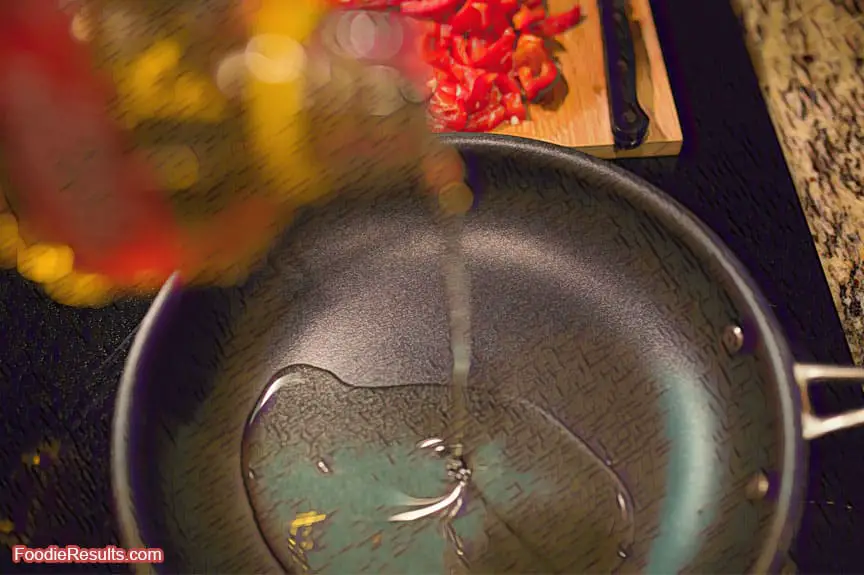
Vegetable Oil is extracted from seeds or other parts of plants. Like animal fats, vegetable fats are mixtures of triglycerides. Commonly, vegetable oil refers to vegetable fats that are liquid at room temperature. The optimum cooking temperature is 400 degrees F.
Vegetable Shortening is made by blending refined cooking oils such as soybean and cottonseed with liquid vegetable oils. It is a type of fat that has been hydrogenated to make the food more affordable and easier to store. Vegetable shortening has a high smoke point and low cost, making it suitable for deep frying. Shortening is any fat that is solid at room temperature. The optimum cooking temperature is 375 degrees F.
Walnut oil is a delicious oil with a mild, sweet flavor. It’s rich in omega-3 fats and vitamin E, which are essential for your diet. It has a high smoke point of 450 degrees Fahrenheit. It can be used in sauteeing, pan-frying, baking, and grilling. The optimum cooking temperature is 295 degrees F.
Just a little FYI
Trans fats are often found in fast food, chips, processed foods, and desserts or sweets, such as pie crusts or frosting. These fats have been hydrogenated, making them cheaper and easier to store for a long time. However, these cooking oils have been linked to heart disease, obesity, and cancer.

Purified cooking oils are extracted from a variety of plant and animal sources. They undergo a purification process to remove harmful impurities, residue, and pesticides.
RBD cooking oils are refined, bleached, and deodorized oils. The result is tasteless oils, so they don’t have any flavor imprinted on the food. This oil is excellent for making salad dressings, mayo, sauces, etc. It’s also suitable for frying to give food slight crispiness to cut through the other flavors in your dish.
High-Oleic Oil is any oil that contains high amounts of monounsaturated fat. Due to its mild taste and high smoke point, it is suitable for frying or sauteing food. High-oleic oil is high in unsaturated fat, low in saturated fat, and has no trans fat.
Sources
- Butter 101: How & Why You Should Clarify Your Butter
- Canola Oil vs. Peanut Oil | Livestrong

- Coconut Oil: Health Benefits, Nutrition Facts, Uses, and More

- Flaxseed Oil: Benefits, Side Effects, Dosage, and Interactions

- Griddle Seasoning Oil (Top Picks Compared) – Griddle King
Recipes – Foodie Results
Articles – Foodie Results


